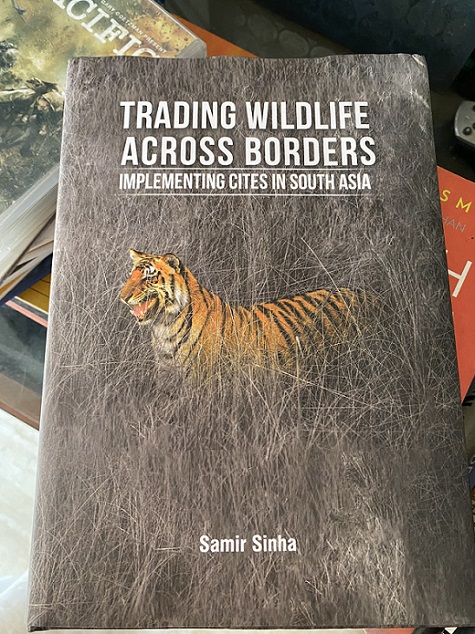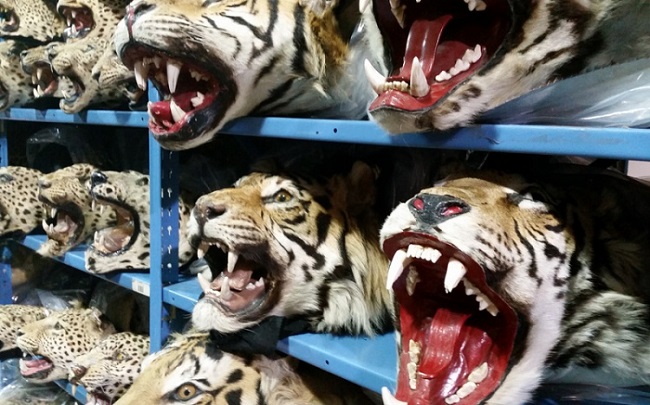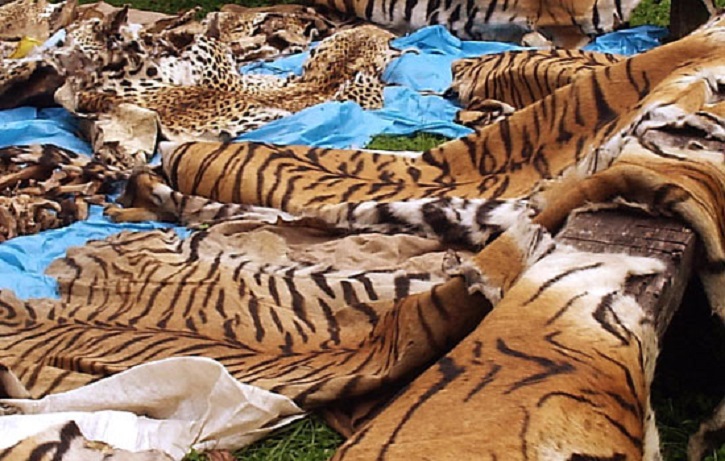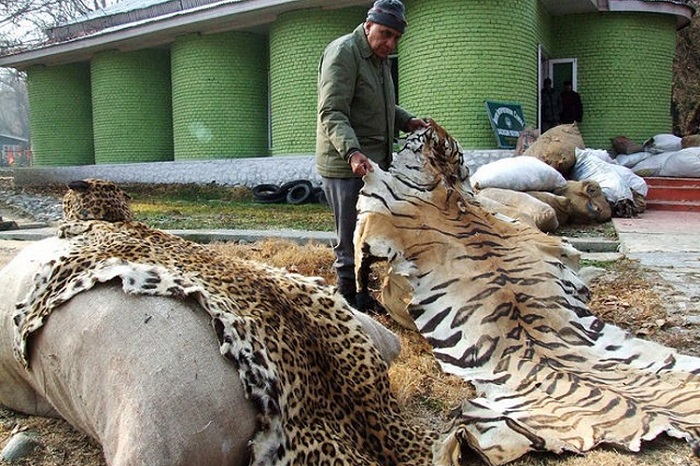A peek into India’s illegal wildlife trade
One of India’s forest wildlife experts has raised a serious alarm. Samir Sinha, a senior Indian Forest Service (IFS) officer and additional principal chief conservator of forest, Uttarakhand, has alerted the nation that India is among the top countries for illegal wildlife trade, and its fast expanding airport sector — a matter of pride for New Delhi — is often used by wildlife traffickers to smuggle high-end, high-value species and products.
In India, the number of airports increased from 50 in 2009 to 127 in 2019, including 23 international airports which handled 66.54 million passengers in 2019-2020. Wildlife trafficking by the air is generally of high-end, high-value products.
In his brilliantly researched book, Trading Wildlife Across Borders: Implementing CITES in South Asia, Sinha — a former director of India’s largest Corbett Tiger Reserve — says wildlife trade poses the second biggest direct threat to the survival of species in India after destruction of habitat across the country. Alarmingly, figures with the Indian government show over 31 percent trafficked items were in the checked luggage for flights operating out of India and 20 percent in air cargo.

In short, smuggling of wildlife animals is turning out to be as sophisticated and well-connected as smuggling of arms.
“Changing national laws across South Asia provided a basis for better engagement across borders. With the emergence of Convention on International Trade in Endangered Species of Wild Fauna and Flora (CITES) in 1973 as a global framework for regulating wildlife trade, the region’s countries began exploring provisions as a means for protecting indigenous species like tigers. Even so, the trade in tiger products was too lucrative for some to abandon. In the face of changing national and international laws, they moved their operations underground,” writes Sinha.
Illegal trade, as a result, remains an all time high. Across the wild jungles of Brazil, Malaysia, Singapore, Thailand, Papua New Guinea, Australia, New Zealand, and some African nations, exotic birds and rare animals are caught and sent out on cargo ships to India and then offloaded through fishing trawlers on the coasts of Konkan and Daman. Some species also come to Kolkata from next door Bangladesh. And eventually, they are sold in thriving illegal markets of Delhi, Mumbai, Hyderabad, Ahmedabad and Kolkata.

Sinha says in his book that revenues generated by the trade in endangered species are estimated at 16-18 billion Euros per year, with the EU the foremost destination market in the world.
Many animals do not survive the trauma of being transported for long hours from their homes through several countries. However, the buyers still make full payment to sellers as the buying cost is astonishingly low.
“Given the high profits from such illicit activities along with the relatively low probability of detection, poor conviction rates and low punishment received by those convicted, these crimes appear very attractive to professional, organized criminals,” writes Sinha, adding such illegal networks comprise many interlinked elements that carry out different functions in the chain.
So checkmating such criminals is a herculean task.
“Criminals engaged in illicit trade in tiger and bear products between Russia and China are known to have engaged with the Russian mafia to have items smuggled across the border. It is believed that the Russian mafia controls a large part of the illegal trade in caviar,” writes Sinha.
The book says – very rightly – interventions by the judiciary have failed to work on such smugglers. In some cases, the traders wait for a particularly strict judge to retire so that they can resume their business without any problems. And anyway, most cases are dropped due to high corruption. Consider the case of Mumbai’s Crawford market for illegal sale of birds and animals, the cops are reportedly in cahoots with illegal traders. Raids rarely take place and when it happens, the cops find nothing because the traders get their alerts well in advance. In some markets, exotic species are kept in stressful conditions alongside domestic animals. The Wildlife Conservation Society said in a report that there are at least 25 markets in India that trade in live wildlife and 14 that trade in wild meat.

Experts claim loopholes in wildlife laws have been routinely exploited by the traders. Consider this one. The WPA regulates trade in wild animals, but — at the same time — WPA does not include exotic wild animals imported into India. Experts claim that this very loophole, in turn, has pushed commoditising and trade of exotic species, since the WPA is enforced only for trade in native animals protected by its six schedules. As a result, illegal trade in exotic species takes place in brick-and-mortar stores across India as well as online, via e-commerce platforms like Quikr and Olx without being licensed and permitted by the State Animal Welfare Boards. So what does the rules say, the book says trade in any exotic species listed in Appendix I of CITES is allowed only with import and export licences from CITES Management Authorities in the importing and the exporting country, a certificate from the Directorate General of Foreign Trade in India, and permissions from the Chief Wildlife Warden of the state to which it is being imported. But then, there is a serious catch. The legal lacunae lie in the fact that the animal may be freely traded once it has entered Indian land. “If someone were found with a kangaroo 100 kilometers inside Indian territory, there is no law to prosecute the owner or possessor,” says a report in a newsmagazine/ https://www.thecitizen.in/index.php/en/newsdetail/index/13/20511/why-the-exotic-wildlife-trade-is-rising-steeply-in-india
Sinha says it is a serious concern. The global illegal trade in wildlife is around $20 billion. What is scary is that this is the fourth largest illicit market across the world after drugs, counterfeit, and human trafficking.
India is among the top 20 countries for illegal wildlife trade.
Fauna species smuggled include star tortoises, exotic birds, red-eared slider turtles, iguana, python, spiders, marmoset and tamarin monkeys, along with tricolour squirrels, iguanas and leopard cubs. Flora smuggled include red sanders, sandalwood, and kuth roots. Some illegal traders also smuggle peacock feathers and shark fins.

The book says India is at the epicenter of the south Asian reptile trade. Endangered Indian star tortoises and black pond turtles are smuggled to South East Asian nations where they are sought after as pets. On the other hand, red-eared slider turtles are brought in from southeast Asia.
Sinha says the illegal wildlife supply-chain goes beyond the seizures at the airport. The supply-chain originates in forests and natural habitats, and involves several people, from locals and poachers to carriers – all responsible for transporting consignments across India and also out of the country.
The book says TRAFFIC’s campaign, Don’t Buy Trouble and the UNEP-WCCB collaboration campaign Not All Animals Migrate By Choice are aimed to create awareness amongst flyers, tourists and airport authorities about the prevalence of illegal wildlife trafficking.
Is the government listening?

